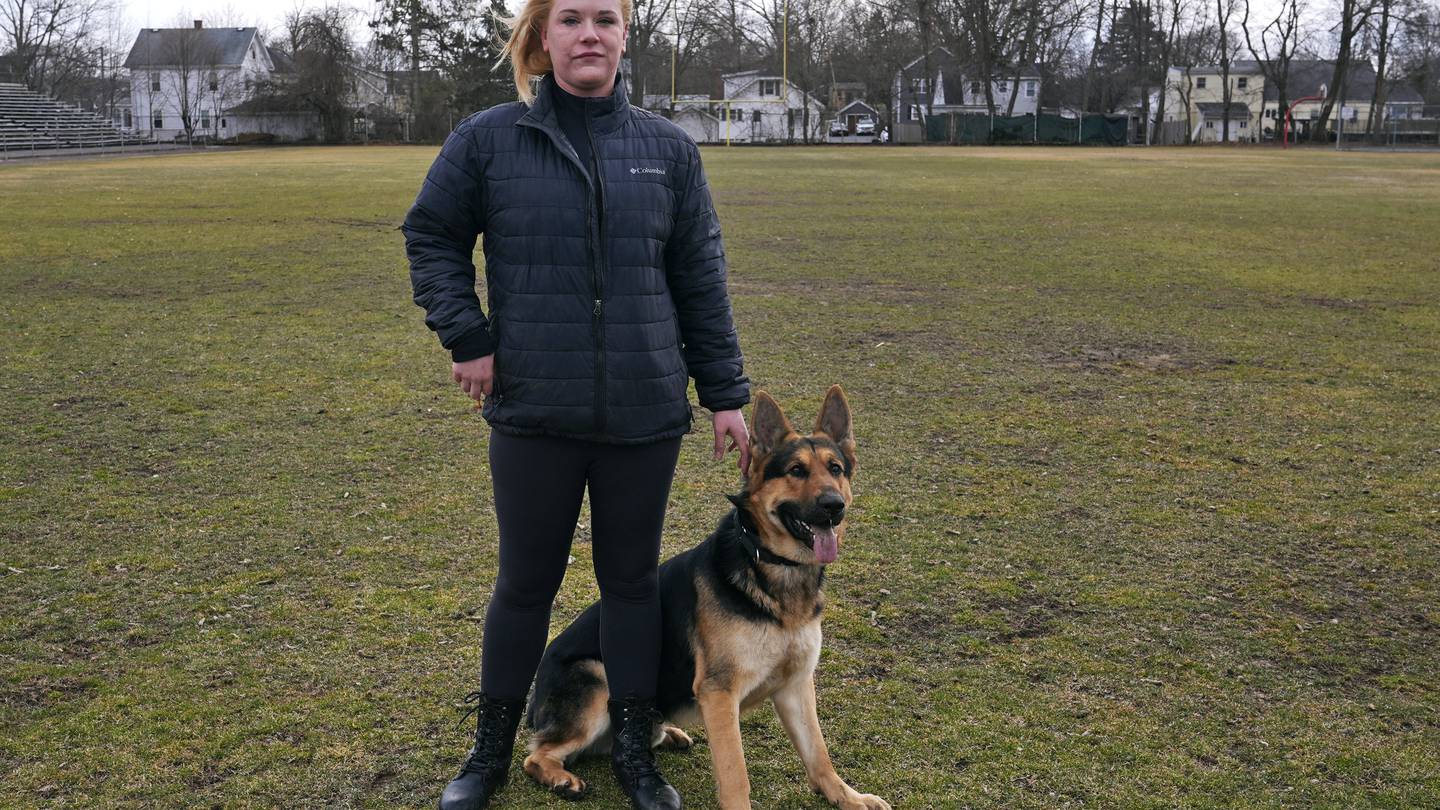Cohasset, Massachusetts (AP) — Detective Lieutenant Gregory Lennon surveyed the unassuming duplex from his patrol car as he awaited the imminent backup. Conducting a routine well-being check, a prevalent task in this tranquil coastal community near Boston, Lennon understood the importance of not entering the premises unaccompanied.
As the backup officers arrived, the scene appeared tranquil under the glow of the winter night. The lower level of the duplex was illuminated, with the shades drawn up.
It was the evening of December 27, 2018, just days after Christmas, a time when Lennon should have been home with his family. However, when a fellow officer called in sick, Lennon willingly accepted the night shift duty. With over two decades of experience in law enforcement, he was well aware of the staffing challenges that often arose.
The night had been uneventful until a concerned mother requested a welfare check on her 25-year-old son, who was known to grapple with mental health issues.
While the mother was away, a neighbor had reported hearing disturbing noises emanating from the residence. Concerned by the lack of response from her son, she reached out to the authorities.
Upon knocking on the front door without a reply, the officers discovered an unlocked sliding-glass door and cautiously entered the premises.
Identifying themselves as Cohasset police, the officers called out for Erich Stelzer, a towering 6-foot, 6-inch bodybuilder who frequently shared workout videos online.
It was at this moment that Lennon heard a chilling cry for help that would forever alter the course of events.
“He’s killing me!” a woman’s desperate voice pierced through the silence. “Help me, he’s killing me!”
Racing to the upstairs bedroom, the officers encountered a locked door. Without hesitation, Lennon forcefully kicked it open.
The sight that met their eyes was harrowing. The walls bore gruesome streaks of blood, with Stelzer restraining a woman in a headlock, a shard of broken glass pressed against her throat. Both individuals were unclothed, and the woman’s injuries were so severe that Lennon feared for her life.
In a moment of sheer terror, 24-year-old Maegan Ball found herself on the brink of death. Having met Stelzer on a dating app, she now faced his delusional conviction that she was the embodiment of evil, responsible for the deaths of his mother and sister. In his distorted reality, it was imperative that she pay the ultimate price.
Inflicting brutal injuries, Stelzer had mercilessly assaulted Ball, leaving her battered and broken. As Lennon entered the room, he recognized the gravity of the situation—a potential homicide in progress.
The imminent threat forced Lennon to swiftly assess the need for lethal intervention. With adrenaline coursing through his veins, he grappled with the weight of the decision.
Guided by a voice urging her to crawl towards safety, Ball summoned every ounce of strength to break free from Stelzer’s grasp. Amidst the chaos and blood-stained turmoil, she inched her way towards potential salvation.
Maintaining a vigilant stance, Lennon aimed his pistol at Stelzer, who defiantly proclaimed, “I am God,” while the other officers prepared their Tasers.
In a tense confrontation, the officers deployed their Tasers as Stelzer advanced towards them, his violent intentions unabated. The crackling sound of the Tasers filled the room as Stelzer convulsed, his body succumbing to the electric shocks.
Seizing a fleeting opportunity, Lennon managed to handcuff Stelzer, albeit with his hands positioned in front—a compromise dictated by the urgency of the situation. Despite the frantic efforts of the officers and medics to revive him, Stelzer slipped beyond the grasp of life.
Stelzer’s tragic demise underscored the complex nature of police interventions involving the use of force, with outcomes that defy simplistic narratives. In the aftermath, the officers, alongside Stelzer’s family, grappled with the profound repercussions of that fateful night.
Stelzer’s descent into violence and chaos was fueled by a cocktail of substances—steroids, marijuana, alcohol, and Adderall—amplified by underlying mental health struggles. His erratic behavior in the days leading to the fatal encounter painted a grim portrait of a troubled individual spiraling towards a violent climax.
Despite the relentless efforts of his family to intervene and secure help for Stelzer, the tragic sequence of events unfolded with devastating swiftness. The specter of untreated mental illness and substance abuse loomed large, culminating in a cataclysmic confrontation that left indelible scars on all involved.
As Ball embarked on a arduous journey of physical and emotional recovery, she found solace in the unwavering support of the officers who had risked their lives to save hers. Their bond, forged in the crucible of adversity, transcended the confines of that traumatic night.
The officers, placed on administrative leave as per protocol, underwent scrutiny and were ultimately exonerated by the district attorney. The specter of lethal force loomed large, yet they had navigated a perilous situation with remarkable restraint.
For Lennon, the echoes of that fateful night reverberated long after the bloodstains had faded. The weight of unintended consequences bore heavily on his conscience, a stark reminder of the fragility of life and the complexities of law enforcement.
